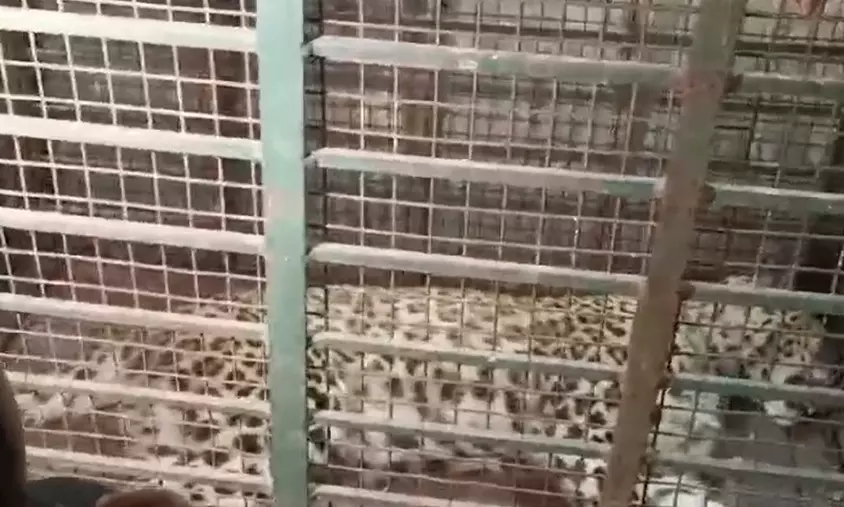Guwahati: Straying leopards trigger call for coexistence and biodiversity preservation

AT Photo
Guwahati, April 6: The straying of leopards into the urban areas of Guwahati has become an increasingly common occurrence, sparking discussions and concerns among residents and wildlife experts alike. The surge in leopard sightings within city limits is attributed to the relentless shrinkage of natural habitats.
Recent events, including the capture of a leopard within the premises of Guwahati Medical College and Hospital (GMCH), underscore the gravity of the situation.
Driven by rapid encroachment and food scarcity in their natural habitats, these magnificent predators are forced to venture into human settlements, leading to conflicts that endanger humans and animals.
Dr Dilip Chetry, a senior primatologist at Aaranyak, emphasised the urgent need for a comprehensive study to identify conflict hotspots and assess the feasibility of coexistence strategies.
Dr Chetry highlighted the importance of preserving existing jungle areas in Guwahati, not only for leopards but also for thriving biodiversity. “Leopards, as stealthy predators, rather than confrontation with humans, primarily target primates, contributing to a form of biological control within ecosystems.”
He clarified that due to shrinking habitats, the leopards, being nocturnal animals, venture out and prey on livestock from backyards while adopting a stealthy approach.
“When the leopards are sunbathing in the hilly areas in winter, the people get panicked and start throwing stones at the leopard. The sensationalising of leopard sightings by the media intensifies panic among the residents. Hence, increasing awareness campaigns among the people becomes important,” Chetry added.
While speaking about the conservation efforts, Chetry said that establishing connectivity between biodiversity hotspots is essential for fostering coexistence in the urban landscape.
Furthermore, Chetry advocated for the establishment of ecological corridors and green belts to reconnect fragmented forest areas, promoting the free movement of wildlife in urban areas. By addressing habitat fragmentation and conducting periodic studies on leopard distribution and conflict hotspots, conservation efforts can be effectively tailored to safeguard these creatures within Guwahati's urban landscape.

